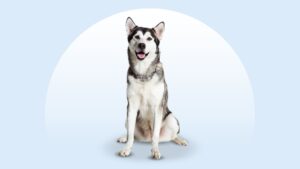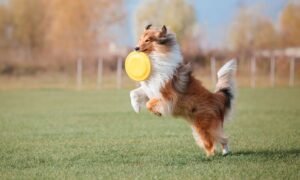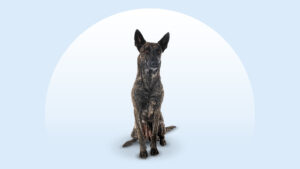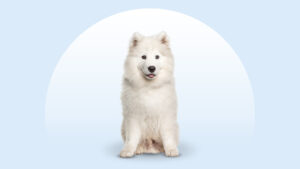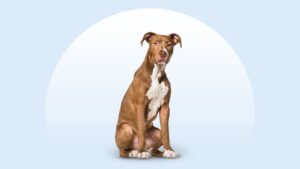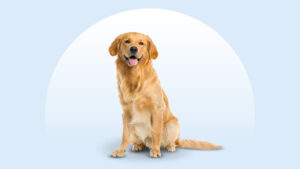Siberian Husky
Updated December 15, 2025
Siberian Husky
Updated December 15, 2025
Your very smart Siberian Husky wasn’t trying to escape the yard—OK, they were, but they didn’t think you were looking. These striking, energetic pups just want to get out to see the world, so you’ll need to provide that sense of adventure and activity.
Cheeky, Outdoorsy, Social
35–60 pounds
20–23.5 inches
12–14 years
Agouti and White, Black and White, Gray and White, Red and White, Sable and White, White, Brown and White, Black Tan and White, Black
You’ve heard of someone trying to break into a house, but what about someone trying to break out? It’s not a horror film—it’s just your Siberian Husky’s standard day.
If you see your Husky fumbling with the doorknob, they’re not being silly; they really want to go out and explore the world. These smart, clever pups will do anything for an adventure, and that includes devising an escape plan.
So, lock your doors, move your trash cans away from the fence (they’re a perfect springboard), and lace up your hiking boots; this pup needs adventure, and they need it now. In return, you’ll get an affectionate, loyal best friend.
Siberian Husky Characteristics
Siberian Husky Appearance
The Siberian Husky is a medium-sized dog who’s athletic and (let’s face it) strikingly attractive. With a thick, fluffy double coat, they have brown or sparkling blue eyes (or sometimes one of each!) with an air of attentiveness.

- Ears
Siberian Husky ears are erect, triangular, and sit up high on their head.
- Eyes
Their almond-shaped eyes can be blue or brown. Some Huskies even have one of each color.
- Nose
A Siberian Husky’s nose is straight, well-defined, and neither pointed nor square. It can be black, liver (a shade of brown), or pink.
- Coat Length
The Siberian Husky has a medium-length, double coat with long guard hairs on top and a soft, thick undercoat.
- Coat Color
A Siberian Husky coat may be solid or include white markings. Huskies can be black, white, brown, red, gray, or agouti (alternating bands of black and tan).
- Tail
The Husky’s furry tail resembles a fox tail. It usually curves upward when your pup is at attention; a trailing tail is normal when your dog rests.
Siberian Husky Temperament
As smart and friendly dogs, Huskies are wonderful companions who thrive on social interaction and outdoor adventures. They need to be surrounded by people and other dogs, and many will talk to you using howls, growls, and whimpers (neighbors be warned!).
If you tend to have lots of people over, your Husky will likely love it and charm everyone they meet. In fact, although they can be very independent-minded at times, these pups don’t like to be alone for long.
If you’re away from the house a lot, get them a sitter or let them hang at doggy daycare so they have company.
These cheeky canines are (quite famously) escape artists, so you’ll need to keep a close eye on your Husky. They’ll figure out ways to get outdoors that you wouldn’t have imagined.
Siberian Huskies are quite intelligent, but they can become easily bored, so training sessions can be a challenge. As a pet parent, you’ll need to be consistent in your schedule and successful in getting your pup’s undivided attention.
Siberian Huskies usually love kids and other dogs—getting a second Husky is even a good option for many families. However, they may not be the best fit for cats and tiny dogs, as they might decide to chase them.
But with an experienced pet parent and the right training, a Husky will be a polite, well-behaved member of your family.
How to Care for a Siberian Husky
Siberian Huskies need experienced pet parents who are willing to put in the time it takes to meet their needs. Huskies are often called high-maintenance dogs because they need lots of grooming, lots of patient training, and lots of daily exercise.
Grooming
Training
Diet
Exercise
Environment
Siberian Husky Health
The typical Siberian Husky lifespan is 12–14 years. Here are some potential health issues to be aware of:
- Epilepsy: Huskies are prone to seizures caused by epilepsy, a neurological disorder that typically begins when a dog is between 6 months and 5 years old. It’s treated with oral medication.
- Eye issues: Cataracts and progressive retinal atrophy (PRA) are not uncommon in Huskies, and while neither is painful, they do lead to blindness. Corneal dystrophy is another risk, which causes cloudy eyes.
- Hip dysplasia: Hip dysplasia is when the ball and socket of the hip and thigh bones doesn’t properly fit. It’s an inherited condition that can be made worse if a pup is overweight, and it eventually leads to arthritis and pain. More severe cases may require surgery, but the condition is often treated with medication, joint supplements, weight management, and/or physical therapy.
- Hypothyroidism: Common in this breed, hypothyroidism includes symptoms like lethargy, hair loss, skin and ear infections, and weight gain. A blood test can diagnosis it, and treatment is a daily oral medication.
- Pemphigus foliaceus: This autoimmune skin disorder occurs when the immune system starts to attack the skin instead of fighting off foreign invaders. It can be very painful for pups if left untreated, so talk to your vet if you notice scales or crusts on the skin, hair loss, itching and scratching, depigmentation of the nose or lips, a fever, fatigue, or lack of appetite.
- Von Willebrand disease: Siberian Huskies are susceptible to von Willebrand disease, a bleeding disorder where the blood doesn’t clot properly. There’s no cure, but your vet can test your dog for this disorder.
Siberian Husky History
Not surprisingly, Siberian Huskies were originally bred as working dogs in Russia—Siberia, specifically. They worked alongside indigenous Siberians, providing companionship and traveling over miles of tundra in frigid temperatures.
The Siberian Husky’s work extended beyond Siberia when folks seeking fortune brought the breed to Alaska to pull sleds during the Gold Rush era of the late 1800s and early 1900s. At this time, they also participated in sled-dog races.
In 1925, the “serum run” was a dog-sled relay over 600 miles in fewer than six days to rush a lifesaving medication to Nome, Alaska, where there was a diphtheria epidemic. Huskies were hailed as heroes, and the lead dog in the final stage of the journey, Balto, was commemorated with a statue in New York City’s Central Park.
During World War II, Siberian Huskies also served in the U.S. Army’s Search and Rescue Unit in the Arctic. In 1930, the American Kennel Club recognized Siberian Huskies as a breed, and the Siberian Husky Club of America was formed in 1938. Today, the Siberian Husky is a popular family pet in the U.S.
Siberian Husky puppies cost between $700–$1,200. If you choose this route, pick a responsible breeder.
You can also adopt a Siberian Husky. Search for a local Siberian Husky Rescue like Husky House, keep an eye out at your local shelter, or search Chewy’s database of adoptable dogs in your area.

